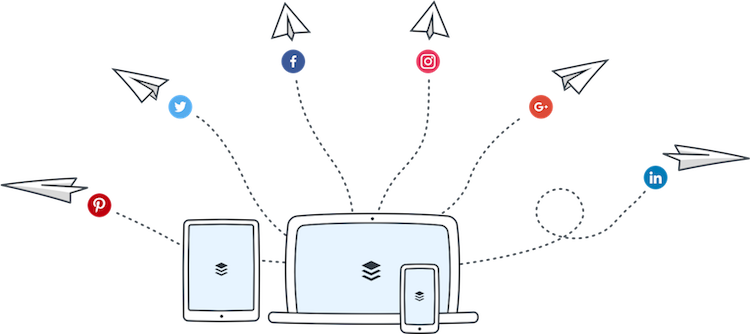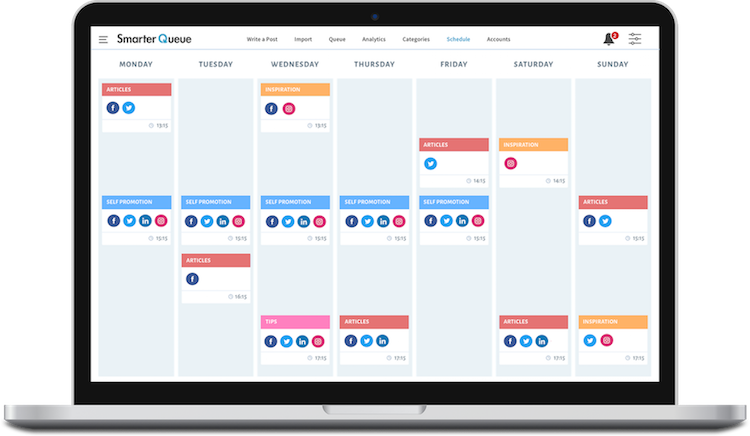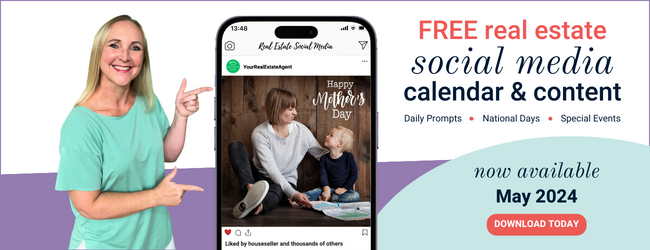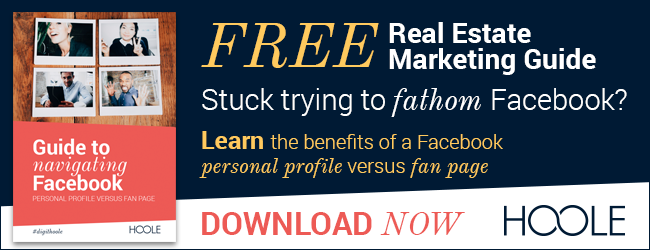Social media scheduling tools are definitely a powerful weapon to build your brand online, but reviewing them all to figure out which one is best for you and your real estate business can be like choosing a mobile phone plan – convoluted and confusing.
Smart real estate agents understand that marketing themselves on social media is an absolute must to get ahead. However, after becoming more familiar with the different social media channels, you’ll soon discover that it can be extremely time-consuming to feed them with weekly or daily content.
Luckily, you don’t have to spend your days glued to social media, as there are several scheduling tools available to make the whole process more efficient so you can be more productive.
To save you the time and hassle, I’ve put together an easy-to-reference run down of the best free and paid social media management tools that I’ve used over the last few years. In compiling this list, I kept in mind the needs of most real estate agents or agencies and drew on my own experience managing my own social media accounts and those of my clients.
My scheduling tool selection criteria
There are many aspects you might consider when comparing different scheduling tools, but the features listed below are the most important, in my view. I’ve used different social media schedulers at different times and selected different tools based on each of my client’s needs, alongside the following criteria:
1. Which social accounts the scheduler tool links with?
In order to be most useful, the tools must work with the accounts you’ll need to post across most often. The most effective social media marketing channels for real estate marketing purposes are these: Facebook, LinkedIn, Instagram, Pinterest, Twitter, and Google+.

Image source: Buffer.com
2. How many social accounts do you need to manage?
Most tools are priced on a scaled membership model. If you need to connect several staff accounts from your office, not just your own social media accounts, you’ll need to purchase a higher subscription tier.
Individuals obviously only need one account but bigger businesses or a social media management agency have more staff and a whole team may need access to the tool. Some scheduling tools are aimed at larger teams, which is needed when more people are accessing the tool regularly.
3. The subscription price?
This is obviously an important factor too as we don’t want to pay more than we need to! Relating back to the previous point, different social media tools may work out more cost-effective for individuals, versus small or large teams.
You should also consider the costs of subscribing to the tool on a month by month or annual basis. As well as the tool gives you a free trial period.
4. Can you set up branded short links?
Link shortening makes the URL of a page you’re linking to significantly shorter while still linking to the same resource. This can be very helpful when characters are limited such as on Twitter (Twitter shortens links automatically).
Link shortening can also be used for tracking purposes – you can use different shortened links to link to the same page from different social media channels and you’ll then be able to track the traffic from each source more easily.
I use branded link shorteners Feedly and Bitly to format my links to my branded url “go.hoole.co” and being able to use this is very important for me. If you’re less concerned about using a branded short link, you might be happy to use standard shortener services that come with the scheduling tools or are available for free such as Hootsuite’s ow.ly and Bitly’s bit.ly.
5. Can you import and pre-schedule content to ‘autopost’?
The main point of a social media management app is, of course, to make your life easier, so it’s important that it’s effective at doing its job. While you can propagate new content to post manually, you also want to make sure that you never run out of content and your tool should ideally make it easy to grab and post third party content.
The ability to import content from RSS feeds is important here as it makes it easy both to recycle your past blog posts to give them more visibility, and to use RSS feeds of other content sources around the web to fill out your own content calendar. A scheduling calendar makes it easy to see at a glance when your content will be promoted and make sure you’re posting new content regularly.

Image source: smarterqueue.com
My top picks – social media scheduling tools
All the tools listed below are ones that I’ve personally used and offer the features described above. You can take a look at my detailed breakdown and social media tools comparison to get a better ideal of which tools will suit you best.
 Hootsuite has been around the longest out of any of the scheduling tools, having being created originally as an in-house tool for a digital services agency in 2008. It continues to be one of the most popular social media management tools, with over 15 million users, and is used by several large organisations including Facebook, Virgin Group, Martha Stewart Media, Zappos, and Panasonic.
Hootsuite has been around the longest out of any of the scheduling tools, having being created originally as an in-house tool for a digital services agency in 2008. It continues to be one of the most popular social media management tools, with over 15 million users, and is used by several large organisations including Facebook, Virgin Group, Martha Stewart Media, Zappos, and Panasonic.
Free Hootsuite Account
Free trial: No need, its free!
User accounts: 1
Social media channels: 35 social media platforms, so you are pretty much covered!
Number of social profiles connected: 3 max
Branded URLs: Nope
RSS feeds integrations: 2
Content scheduling calendar: Yes
Reporting: Basic, tracks follower growth
Ease of use: Difficult, but includes free training. This is perfect for getting to grips with Hootsuite, if you feel you’ll want to upgrade to the Professional version (covered below).
Value add features: Sweepstake and lead generation.
Check out the Hootsuite Free Plan for yourself.
Hootsuite Professional Account
Free trial: Yes, 30 days
User accounts: 1
Social media channels: 35 social media platforms, so you are pretty much covered!
Number of social profiles connected: 10 max
Branded URLs: No
RSS feeds integrations: Unlimited
Content scheduling calendar: Yes
Reporting: Yes, you can monitor and respond to your feeds within Hootsuite which is a plus in my book.
Ease of use: It can be a bit difficult to learn, but they offer 30-minute group training sessions.
Value add features: Sweepstake and lead generation.
Pricing (at time of publishing): US$25 a month, billed annually. The downside being that you are locked in for a year.
Check out the Hootsuite Professional Plan for yourself.
 Buffer was first developed in 2010 in the UK as a scheduling tool for Twitter only. The startup moved to San Francisco after seeing massive early success and managing to secure several investors. Buffer is now integrated with most of the major social networks and is used by over 4 million marketers worldwide.
Buffer was first developed in 2010 in the UK as a scheduling tool for Twitter only. The startup moved to San Francisco after seeing massive early success and managing to secure several investors. Buffer is now integrated with most of the major social networks and is used by over 4 million marketers worldwide.
Free Buffer Account
Free trial: No need, its free!
User accounts: 1
Social media channels: Excludes Pinterest. Includes Facebook, LinkedIn, Twitter, Google+, and Instagram.
Number of social profiles connected: 10 max, but also limits you to 10 scheduled posts per account.
Branded URLs: Nope
RSS feeds integrations: Nope
Content scheduling calendar: Nope
Reporting: Basic
Ease of use: Medium
Value add features: Browser extension, Video and GIF uploader.
Check out the Free Buffer Plan for yourself.
Buffer Awesome Account
It’s worth signing up for the name alone! My on-staff photographer uses this one as a lot of her content is visual and it includes Instagram posting from desktop.
Free trial: Yes, 7 days
User accounts: 1
Social media channels: Excludes Pinterest. Includes Facebook, LinkedIn, Twitter, Google+, and Instagram.
Number of social profiles connected: 10 max, but also limits you to 100 scheduled posts per account, which is fine initially but you’ll outgrow this limitation in a few months.
Branded URLs: Nope
RSS feeds integrations: Yes
Content scheduling calendar: Yes
Reporting: Great reports, good growth anaylitics and identifies your most influencial followers.
Ease of use: Medium
Value add features: Browser extension, Video and GIF uploader.
Pricing (at time of publishing): US$10 a month
Check out the Buffer Plans for yourself.

Meet Edgar was created by CEO Laura Roeder in 2014 to fulfil her own needs for a tool that would save social media updates after posting them, and automatically post updates more than once. Others also found this functionality of the tool useful and the company quickly grew, hitting $100k in monthly revenue in less than a year. The tool now has over 7,000 users and boasts glowing reviews from some of the web’s most well known marketers including Darren Rowse, Neil Patel, and Noah Kagan.
Meet Edgar Account
Free trial: Yes, 14 day free trial
User accounts: 1
Social media channels: Facebook, LinkedIn and Twitter only.
Number of social profiles connected: 25 max
Branded URLs: Yes, via Bitly or Feedly
Content scheduling calendar: Yes
RSS feeds integrations: Yes
Reporting: Basic, tracks follower growth
Ease of use: Easy
Value add features: Direct video uploads
Pricing (at time of publishing): US$49 a month and save one month on a yearly plan.
Check out Meet Edgar for yourself.

SmarterQueue is one of the newest tools around and launched officially in January 2017. It includes very similar features to Hootsuite and Meet Edgar with several extras and more affordable plans. Rather than reinventing the wheel they’ve used the business model of copying an already successful tool, improving it, and offering it at a lower price. It’s definitely worth checking out if you’re happy using one of the older tools, just to see if your brand loyalty can be swayed.
SmarterQueue is the tool that we currently use at Hoole.co, and if you’d like to sign up you can receive an extended free trial. Visit this special link: https://smarterqueue.com/?ref=5xm
SmarterQueue Account
Free trial: Yes, 14 day free trial
User accounts: 1
Social media channels: Facebook, LinkedIn, Twitter, and Instagram (from a mobile app), Google+ and Pinterest are coming soon.
Number of social profiles connected: 4 on Solo (with 500 queued posts), 10 on Business (with 1000 queued posts)
Branded URLs: Yes, using Bit.ly.
Content scheduling calendar: Yes
RSS feeds integrations: Yes
Reporting: Basic
Ease of use: Easy
Value add features: Import from 3rd party social media accounts and saved searches – making content creation super easy!
Pricing (at time of publishing): US$19 a month on Solo, US$39.99 a month on Business. Save 15% on a yearly plan.
Check out Smarter Queue for yourself.

Social Eazie does make social easy! This one’s Australian, made in Melbourne.Come on, we had to have an antipodean social media management tool in the mix too!
The tool was launched in 2016 to fill a gap in the market to find shareable content more easily. As well as being a social media manager, Social Eazie also displays feeds from other sources based on topics you’re interested in, and provides a “social wall” for displaying all your social media posts from different networks together on one page on your website.
Peter Karanicolas from Social Eazie recommends the best way for real estate agents to use the tool is by finding and following content from other businesses, and then adding in your own content. Peter say’s “Posts from sites like Realestate.com.au, and Domain.com.au can be followed and reposted easily as well as local businesses and other relevant content based on hashtags and search terms such as DIY and home improvement.”
Social Eazie Account
Free trial: Yes, 14 day free trial
User accounts: 1
Social media channels: Facebook, LinkedIn, Twitter, Instagram, and Pinterest
Number of social profiles connected: 10 max, there are no limitations on schedule posts
Branded URLs: Nope
Content scheduling calendar: Yes
RSS feeds integrations: Nope, You can follow 200 social accounts across Facebook, Twitter and Instagram, including hashtags
Reporting: Basic analytics / insights
Ease of use: Easy
Value add features: Facebook boosting and Ads manager, and social website feed
Pricing (at time of publishing): AU$30 a month on their most popular plan.
Check out Social Eazie for yourself.

Planable is social media collaboration platform for social media teams. With Planable you can preview content before actually publishing it, collaborate on context, brainstorm ideas, receive and implement feedback, ask or get approvals from any of your team mates or clients and schedule in a calendar view on all social media pages.
Planable Account
Free Trial: Yes, 1 free workspaces, forever
User accounts: up to three people to collaborate
Social media channels: Facebook, LinkedIn, Twitter, and Instagram
Number of social profiles connected: one of each social media type on Free, unlimited on Premium
Branded URLs: No
Content scheduling calendar: Yes
RSS feeds integrations: No
Reporting: No
Ease of use: Very Easy
Value add features: Preview how the content looks like – a complete simulation of the social media feed and collaboration between team mates or with your client.
Pricing (at time of publishing): Premium $49 / month for 5 workspaces (brands), save 20% on yearly plans.
Check out Planable for yourself.
Choose a social scheduling tool that works for you
The social media landscape is constantly moving and changing, and functions of different tools are improving all the time, so my advice would be to subscribe on a month-by-month basis rather than at a year at a time. This way you can start out with the basics and upgrade to a more sophisticated tool as your skills grow at a later date.
Remember the key to great social media engagement is content. Scheduling tools don’t create content for you. It’s vital to keep producing good quality evergreen content of your own, which will bring people to your website, so you can keep recycling it.
You should also promote a mix of your own content to bring people back to your site, and that of others – always aim to provide the most value, and interesting content to your audience as possible.
Social media scheduling tools can help you to be more efficient and possibly lazy to a point, but there is nothing lazy about social media marketing in general. Scheduling your posts is only one part of the puzzle – you need to build engagement too, and that can’t be done with lots of special techniques; but that’s a story for another day.
The most important thing to remember is that your own unique content always wins, because it’s your own content that leads potential new clients to your brand, rather than someone else’s!


Join the Conversation - add your thoughts